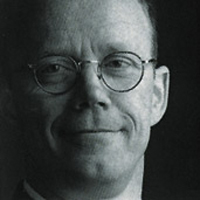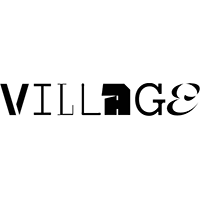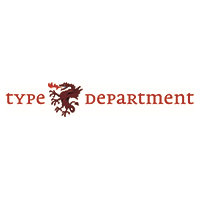I conducted mini-interviews with the winning FontFont designers which I originally intended to publish in last week's ISTD International TypoGraphic Awards 2009 post. Because the entry turned out quite long already, I decided to save the second part for today. I chatted briefly with the three type designers – Julia Sysmäläinen who won a Premier Award for FF Mister K, and Daniel Utz and Łukasz Dziedzic whose FF Netto and FF Pitu were awarded a Certificate of Excellence.

The obvious thing to ask was how it felt to receive an award for their typefaces after all this long and hard work – many people don't realise how much creativity, skill, and dedication it takes to produce a family of well-designed and fully-functional OpenType fonts. No, they don't simply magically appear on the FontShop website and onto your hard drive, imagine that! For Łukasz Dziedzic the award came totally out of the blue as he never enters any competitions, yet he feels very good about FF Pitu winning a Certificate.
Ł U K A S Z D Z I E D Z I C| I rather don't participate in contests, so getting any award is kind of a miracle. And because I have absolutley no idea what it means to receive a "Certificate of Excellence" from ISTD I can pretend I have an Oscar, or a Nobel Prize, or something like this … Cool.
Newcomer Daniel Utz was – understandably – completely surprised as well.
D A N I E L U T Z| I'm glad to see other people appreciate my work. Because it is my first ever type design I'm still amazed that it hit the road so well and now even got an award.

Julia Sysmäläinen already has some experience with prizes: FF Mister K was recognised in ParaType's International Type Design Competition "Modern Cyrillic".
J U L I A S Y S M Ä L Ä I N E N| I was absolutely stunned when Petra told me FF Mister K won an ISTD Pemier Award, around midnight the Friday before the ceremony. I am really happy that after the ParaType award the Latin character set also found similar appreciation. Although personally I am quite convinced of the intrinsic qualities of the design, I can imagine they are not always noticeable to others who are not actually using the fonts. I am grateful the juries of both competitions acknowledged the faces as they are neither "perfect" nor "beautiful" in the classical sense, but instead display a very strong character.
The (innovative?) concept behind this design is that FF Mister K is not just a typeface but also a personality, and a very complex one at that. This personality originated from Franz Kafka's own handwriting, and it permeates the looks and behaviour of the fonts. Yet now – almost a hundred years after Kafka wrote his great novels – the typeface also displays a number of new character traits. FF Mister K is very emotional and prone to sudden mood changes; it comes from the past linked to science, but is more involved in arts/design now (and often regrets this). When in its Onstage persona the face can be pretty vain. An immigrant from the "East", it speaks English – and many other languages – fluently but with a thick "Eastern" accent. It is chaotic, not really successful, yet not entirely a loser neither because it has a solid sense of humour and self-irony, and even when things go terribly wrong it keeps planning new projects for the future. I hope to discover more and more about its personality as I and others will be using the typeface.
Why FontFont?
My partner in font-geekery Stephen once wrote the insightful post Taking Your Fonts to Market: Foundry, Reseller, or Go Solo? on Typographica, so I was curious to find out why the three designers had chosen to publish their work through the FontFont library. Łukasz couldn't be any more concise.
Ł U K A S Z| Because of Erik Spiekermann.
D A N I E L| It was the yellow and black Corporate Design! Joking aside – the last two decades FontFont has released a great diversity of fresh fonts, so it seemed the best match for a typeface like Netto. Of course a large foundry like FontFont also offers a good opportunity for an unknown type designer to get a huge audience for a new typeface.

The general public often doesn't realise what the exact role of the foundry is in the production and marketing of new typefaces. Do they simply accept the font files from the type designer and put them on sale "as is"?
J U L I A| No, not at all; I received incredible support from everybody at FSI – FontShop International. To go back to the origins of FF Mister K – you should know I studied literature and languages prior to graphic design, so I was well acquainted with Kafka's work and manuscripts. I had already done some more conventional type designs when I started to work on a font based on Kafka's manuscripts; just for the heck of it. It was so much fun seeing the stylistic variations in his handwriting while reading the texts. This made me try to figure out the writing process, deciphering stuff he turned almost unreadable by energetically crossing out sections. Taking it from there, I sent some rough results to the FSI Type Board quite early on. This was a natural decision for me, since I was already then working for Erik Spiekermann at UnitedDesigners (now Edenspiekermann) and I respect him very much, not only as a type designer. The critique and some excellent suggestions from the Type Board helped me improve and complete the typeface. It then took two more years of work for me and FSI before it was released in December 2008.
FontFont is a great foundry to work with, and I am really thankful for all the help I received and still am getting from them. I would like to single out Christoph Koeberlin for his valuable contributions to both the current version of FF Mister K and the upcoming new family members. And the marketing department led by Ivo (Gabrowitsch) did a wonderful job introducing the font. Personally I feel the two awards were earned by all of us together, not just me.

D A N I E L| The idea to design a typeface that was stripped of all historical references grew on me by the end of 2003. There still aren't that many typefaces covering that area. FF Isonorm was the font that came closest to what I had in mind, but its rigid geometrical structure makes it too raw for long texts. I wanted the letters to show the barest, clearest forms possible while remaining very readable. The same construction principles were used to build icons and arrows as well.
After I submitted my design FSI helped me improve on the typeface. Head of Type Department Andreas Frohloff convinced me to vary the stroke width, which took me about two whole weeks of modifying bezier curves yet eventually proved to be essential advice. The horizontal strokes are now 90% of the width of the vertical stems. Although the difference is barely noticeable, the legibility of the faces ameliorated a lot and the characters look much smoother compared to their perfectly monoline forerunners. FSI also assisted me with the technical intricacies of font production. As I'm still new to Fontlab I was quite happy that I could skip the second half of the 900 page manual. Hinting is a fascinating subject but quite complex …
Originally I wanted to name my typeface after Donzdorf, my home town in Southern Germany. I liked the idea of a chunky town name. It was intended be a tribute to Rotis – also a village name – which sounds quite subtle and sophisticated in contrast. FontShop were afraid of unintended associations, as "Donz" could be understood as "dunce" in English, an unfortunate resemblance. Well, it's a simple typeface but it's definitely not dumb, so I agreed to search for another name. When my wife came up with Netto we were all quite happy as it fits perfectly and has a nice ring to it.

What kind of support did FSI provide in the production of FF Pitu?
Ł U K A S Z| Putting me under pressure to finish the damn design! (laughs) To tell you a bit more about the origins of FF Pitu, its first incarnation dates back to 2003. I remember designing it just for fun, in only one bold style. But when I saw it printed in a newspaper a few years later, and FSI asked me to add some weights, I decided to clean up the shapes, modify the proportions, change design details, alter terminals … everything. I also removed some swashes, added new ones, plus ligatures, small caps, and so on.
Because FontLab isn't very helpful in designing italic fonts, I decided to design Pitu as an upright typeface, but obliqued it using the "slant" parameter in the font file. It worked perfectly for my PostScript Type 1 fonts, so I thought why not? When the fonts were ready and the final versions sent to FontShop, somebody discovered how they had been designed. They got back to me, telling me: "It doesn't work for TrueType, sorry!" I can assure you painstakingly moving extreme Bézier nodes in this type of design is the perfect zen practice.












